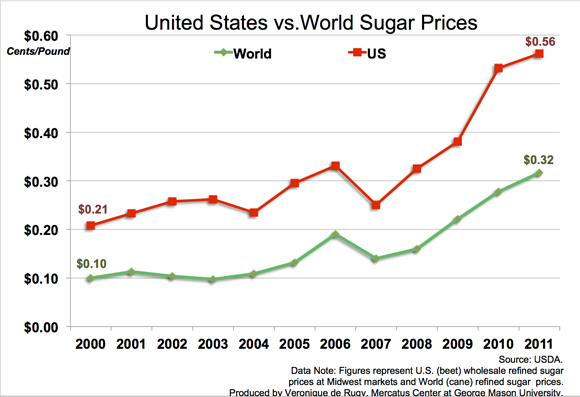- | Regulation Regulation
- | Data Visualizations Data Visualizations
- |
Cronyism In the Sugar Industry: Comparing U.S. to World Prices
As a result of these government actions, U.S. consumers and businesses have had to pay twice the world price of sugar on average since 1982.
The nearly $1 trillion Farm Bill recently passed in the Senate contains one of the worst cases of cronyism: protection granted to the sugar industry. The government protects the domestic sugar industry by shielding producers against foreign competitors by imposing U.S. import quotas, and against low prices generally with a no-recourse loan program that serves as an effective price floor. A consequence of such policy is evidenced through the huge disparity in sugar prices that American consumers face compared to the rest of the world.
As a result of these government actions, U.S. consumers and businesses have had to pay twice the world price of sugar on average since 1982, according to economist Mark Perry. Today, the U.S. sugar price is 56 cents per pound versus the world 32 cents per pound. Since 2000, these numbers have grown by 218 percent for U.S. prices and 170 percent for world prices.
The irony is that the USDA also spends $80 billion a year trying to alleviate the high cost of food for some 46 million poorer Americans through programs such as food stamps. The one hand takes, and the other gives.



